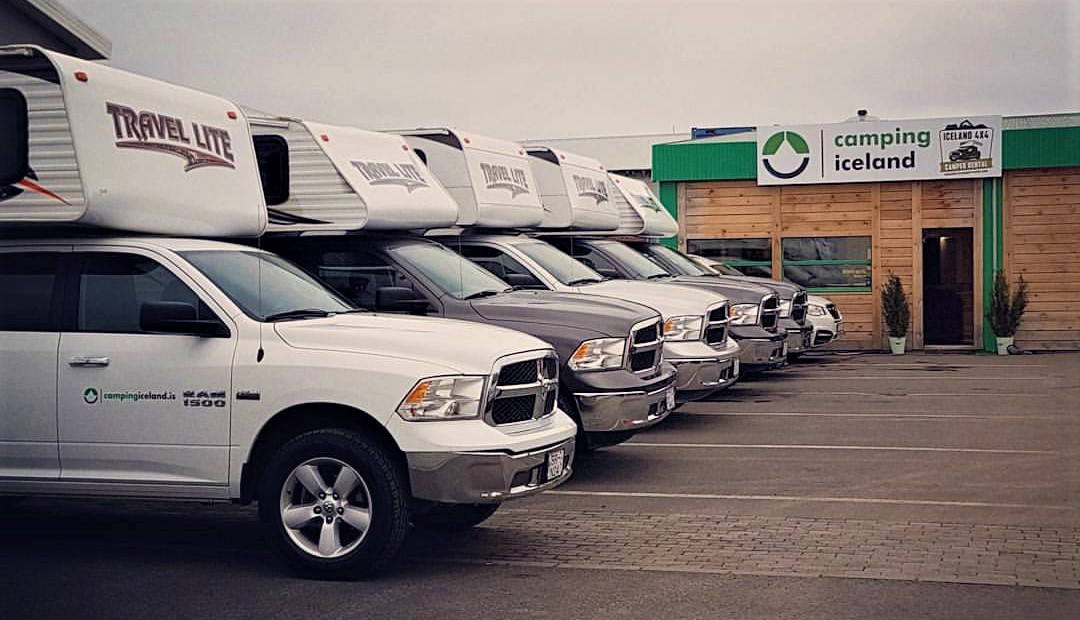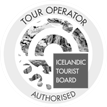Campervan Iceland

Why go camping?
Camping in Iceland is a great way to experience Iceland. Whether it’s in a tent, camper or a trailer, the proximity to nature is hard to top. Here at Campervan Island we strive to make that camping experience as problem free and comfortable as possible by offering specially designed Campers and camper vans for your stay in Iceland. We offer a good variety of Campers which should meet all your requirements.
Enjoy a Great Camping Experience in Iceland
Many pose reasonable questions like, whether it is to cold to sleep outside in a tent in ICE-land? The first thing you have to bear in mind is that the cliche you heard as a child saying that “Iceland is green and Greenland is icy” is actually true.
Is it cold?
"No", it is more mild all year. The average summer temperature in the capital, Reykjavik, is around 13°C, with average high of 24.3°C/76°F in July. Snow in Iceland is not that common and snow falls intermittently in Reykjavik. Snow is more frequently seen in the North, but almost only in winter.
The reason Iceland isn't that cold, is that Iceland has a maritime climate, which minimizes temperature swings. It takes longer to cool down the sea than the mainland. In addition, Iceland is granted the privilege of hot air coming in with the Gulf Stream.
Is it convenient?
Iceland has over 200 equipped campsites. Most campsites do not require any reservations giving you the possibility to adjust your schedule according to your preferences and complete freedom to “follow the weather”. Once at a campsite, you can expect to find electrical hook-ups, running (drinkable) water and restrooms. Most campsites also have a playground for kids, and a communal charcoal grill (charcoals not provided). Most campsites are open plan and therefore allow campers to choose the spot of their fancy, so make sure you have a good look around before you pitch your tent.
If you don’t want to stay at a campsite the whole time, in general, travelers are allowed to encamp everywhere except close to residential buildings, protected areas, and on cultivated land. (A fenced of grass field is also cultivated land. The grass being the product, as most animals stay indoors during winter, and even those who stay outdoors need feeding). Remember to ask land owner for a permission.
Is it easy?
Yes. There are campsites in almost every little town and at most attractions. The camping card is a great investment if you intend to camp at campsites for a long period of time. It is valid for 2 adults and up to 4 children for up to 30 nights. The Camping card is valid for 41 campsites all over Iceland. A small tax should be expected on entrance. The camping card can be bought at our offices as well as most gas stations.
Is it safe?
Iceland is very safe! In fact, it's one of the safest countries in the world, and frequently tops the charts, as well as being one of the most developed country in the world according to the UN. Theft in Iceland is not common, and robbery almost unheard of.
There are safety measures you can take to further improve your safety.
a. 1st and foremost, let people know where you are. A simple twisted ankle can be problematic if you are in middle of nowhere, and nobody knows you are there. Write a quick note with your travel plan and when you intend to be back, leave it at the nearest information center, kiosk, or even in your car if no one is around. It's better than nothing as an untended vehicle often raises suspicion, and the note would tell rescuers where you went. You can also use safetravel.is for your travel itinerary.
- Wear layers! You are not likely to die of hunger in Iceland, and water is abundant. But getting wet and cold can finish a person in a surprisingly short period. It's more common that people subcumb to the cold in above freezing temperatures than in extreme colds. Why? Because in extreme colds people tend to dress accordingly and can better withstand laying motionless without loosing to much body temperature.
- Have a phone. It's usually quite easy to get a phone signal in Iceland and if the signal is not strong, going up the next hill usually does the trick. And having some means of communicating with the outside world is invaluable when the unexpected happens.
- Talk to the locals. Don’t worry, almost all Icelanders speak English and most welcome the opportunity to help someone out, so don’t be shy to approach an Icelander, whether you need assistance or just feel like talking. Most Icelanders are very friendly, and welcome travelers as if they were long lost cousins. According to the World Economic forum, Iceland is the friendliest country in the world to visit.
Driving In Iceland
Safety first.
Driving in Iceland can be a rewarding but difficult task, and it is important that drivers know as much about Iceland and its road system as possible. Below are some of the main areas of interest. We encourage every driver to read the following information and watch the video to the left.
a. Most mountain roads and roads in the interior of Iceland have a gravel surface. The surface on the gravel roads is often loose, especially on the shoulder of the road. You should drive carefully and slow down whenever approaching an oncoming vehicle.
- The mountain roads are also often very narrow, and not made for speeding. Blind corners and hills are also very common in Iceland. It is important to slow down and keep well to the right when approaching such areas.
- The same goes for most highland bridges, which are only wide enough for one car at a time. When meeting another vehicle on a bridge, the one arriving first has the right of way, but caution and consideration should always be shown.
- Icelandic roads are often raised (to help keep roads open during heavy snow). Because of this, rollovers can easily happen if the car strays too far to the side of the road.
- Domestic animals, mainly sheep, often stray onto the roads. Please take care and slow downwhen approaching the animal since it might panic and run in front of the oncoming car. If you hit an animal you should immediately call the police or notify the nearest farm.
- The general speed limit is 50 km/h in urban areas, 90 km/h on asphalt roads in rural areas, and 80 km/h on gravel roads in rural areas. This applies to a straight empty road in the best possible conditions! Special warning signs might indicate danger ahead, such as sharp bends, but there is generally no separate sign to reduce speed. The cause of a vast majority of traffic accidents in Iceland can be traced back to driving faster than the condition of the road allows. Please choose a safe speed according to conditions.
- Motorists are obliged by law to use headlights at all times, day and night.
- In Iceland all off road driving, or driving unmarked tracks is prohibited by law. Heavy fines apply!
- Icelandic law forbids any driving under the influence of alcohol.
- Leaving human waste is prohibited by law and considered littering. Fines are applied accordingly.
- In Iceland you drive on the right and overtake on the left.
For further information, please visit our FAQ or send us an direct e-mail. Our camping advisers will happily assist you with the planning for your vacation.
[Go Back]


